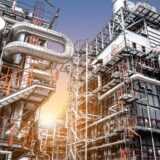
Shell and USP pioneer world’s first ethanol-based hydrogen fuel station
In São Paulo, Brazil, a groundbreaking initiative is underway. Shell, in collaboration with its partners, is constructing the world’s first experimental hydrogen refueling station that uses ethanol as its primary source. This project, located at the University of São Paulo (USP), is a testament to the growing interest in sustainable energy solutions and the global push to reduce carbon emissions.
The station, occupying a 425-square-meter area, is designed to produce 4.5 kilograms of hydrogen per hour. This capacity can refuel up to three buses and one light vehicle. With an investment of BRL50 million (USD10 million) from Shell Brasil, sourced from the PD&I clause of the National Agency of Petroleum, Natural Gas and Biofuels (ANP), the project is a significant step towards a greener future.
ANP is the federal regulatory agency in Brazil responsible for regulating, contracting, and supervising activities related to the exploration, production, refining, processing, transportation, and distribution of petroleum, natural gas, and biofuels in the country. The ANP plays a critical role in ensuring the proper functioning of the Brazilian oil and gas market, setting technical standards, and promoting safety and environmental protection in the industry.
The choice of ethanol as the source material is strategic. Brazil, with its robust biofuel industry, is well-positioned to leverage its existing ethanol infrastructure. The conversion process from ethanol to hydrogen involves a chemical reaction known as ‘steam reforming’. In this process, ethanol reacts with water under specific temperatures and pressures within a reactor.
This innovative project has garnered support from various stakeholders. Hytron, a pioneer in ethanol reforming technology, is contributing its expertise to the initiative. The ethanol required for hydrogen production will be supplied by Raízen, the world’s largest sugarcane ethanol producer. The benefits of using ethanol are manifold. Not only is it cost-effective, but its transportation also poses fewer challenges compared to compressed hydrogen.
However, the journey hasn’t been without challenges. The project faced hurdles, including concerns about vehicle safety and the financial feasibility of rapid expansion. Despite these obstacles, the commitment to the project remains unwavering.
The experimental station is expected to be operational by the second half of 2024. Once functional, it will serve as a model for similar initiatives worldwide. The success of this project could pave the way for a global shift towards more sustainable fuel sources, reducing our dependence on fossil fuels and making significant strides in the fight against climate change.










